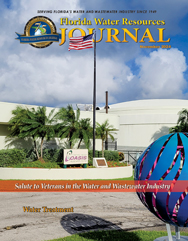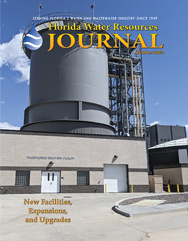EPA Issues Warning to Utilities About Cyber Attacks
The U.S. Environmental Protection Agency (EPA) is urging municipalities across
the United States to take additional security precautions in the wake of recent
cybersecurity attacks.
The attacks were seemingly committed by hackers from foreign nations and
targeted small communities in Texas and Pennsylvania. This, in combination with
an EPA inspection of drinking water systems across the U.S., revealed
cybersecurity weaknesses and prompted their warning to utilities, including some
in Michigan.
Some of the actions EPA recommends drinking water systems take to strengthen
their security include:
Reducing exposure to public-facing internet
Conducting regular cybersecurity assessments
Changing default passwords immediately
Conducting an inventory of operational technology/information technology
(OT/IT) assets
Developing and exercising cybersecurity incident response and recovery
plans.
Backup OT/IT systems
Reducing exposure to vulnerabilities
Conducting cybersecurity awareness training
Along with steps laid out by EPA, there are many other critical questions that
community leaders need to ask themselves when it comes to evaluating how
vulnerable their water systems might be to a cyber attack.
Some security system failures identified by EPA in its inspections of utilities
included default passwords that had not been updated for some time, in addition
to single logins that could be easily compromised.
While attacks in some states were resolved quickly (despite one in Texas causing a
water system to overflow) a worst-case scenario could mean total contamination
of a water system, and EPA believes this is not the last time the U.S. will face this
kind of threat.
The EPA said it’s offering technical assistance, training, and educational resources
to any communities that might need them as they navigate potential security
system updates.
Along with discovering cybersecurity weaknesses, EPA inspections also revealed
that more than 70 percent of water systems studied do not meet the clean water
standards outlined in the Safe Drinking Water Act.
For that reason, it’s increasing planned inspections.
EPA Settles Stormwater Case, Protecting Water Quality in Washington, D.C.
U.S. Environmental Protection Agency (EPA) announced that TPWR Developer, LLC, CBG Building Company LLC, and Bowman Consulting DC have settled alleged violations of regulations designed to protect America’s waterways from polluted stormwater runoff.
In an administrative consent agreement with EPA, the companies have agreed to pay a $27,000 penalty and implement a supplemental environmental project (SEP), to settle alleged Clean Water Act violations involving stormwater runoff from the Parks at Walter Reed construction site to Rock Creek and downstream waterways.
The Parks at Walter Reed is a multi-use development construction site in Washington, D.C., consisting of apartment and commercial spaces, located on the former Walter Reed Army Hospital grounds.
Uncontrolled stormwater runoff from construction and industrial sites often contains sediment, oil and grease, chemicals, nutrients, and other pollutants. The Clean Water Act (CWA) requires owners of certain construction and industrial operations to obtain a permit before discharging stormwater runoff into waterways. These permits include pollution-reducing practices, such as runoff reduction measures, spill prevention safeguards, material storage and coverage requirements, and employee training.
In the consent agreement, EPA cited the companies for failing to have the required National Pollutant Discharge Elimination System (NPDES) permit coverage for stormwater discharges, in violation of the CWA. To correct these violations, the companies submitted notices of intent for coverage under EPA’s NPDES construction general permit, which were approved by EPA.
In addition to the penalty, the companies will also spend at least $40,000 to implement a SEP in Rock Creek Park that will help protect the Hay’s Spring amphipod, the only endangered species in the D.C. area. The companies will help restore the amphipod’s spring habitats, revegetate social trail entrances, and plant trees and plants native to Rock Creek Park to provide stabilization and tree cover. This project will be performed with oversight from the National Park Service.
For more information about EPA’s stormwater program, visit www.epa.gov/npdes/npdes-stormwater-program.



















